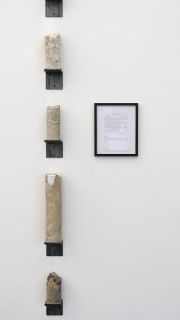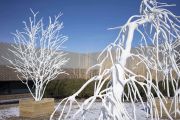Eliza Evans
Artist Statement / Bio
Eliza Evans experiments with sculpture, print, video, and textiles to identify disconnections and absurdities in social, economic, and ecological systems. The initial parameters of each work are carefully researched and then evolve as a result of interaction with people, time, and weather. Evans was born in a rustbelt steel town and raised in rural Appalachia. She currently splits her time between New York City and the Hudson Valley. Her work was exhibited at the Chautauqua Institution, Chautauqua, NY (2019), Edward Hopper House Museum, Nyack, NY (2019), Chashama Sculpture Field, Pine Plains, NY (2018), BRIC, Brooklyn (2017), and Purchase College, Purchase, NY (2017). Residencies include the National Center for Ecological Analysis and Synthesis, UC Santa Barbara (2020), Bronx Museum AIM, and Franconia Sculpture Park, Shafer, MN (both 2019). Evans holds an MFA from SUNY Purchase College in visual art and a Ph.D. in economic sociology from the University of Texas at Austin
Artist Social
- Facebook: https://www.facebook.com/eliza.evans.96





